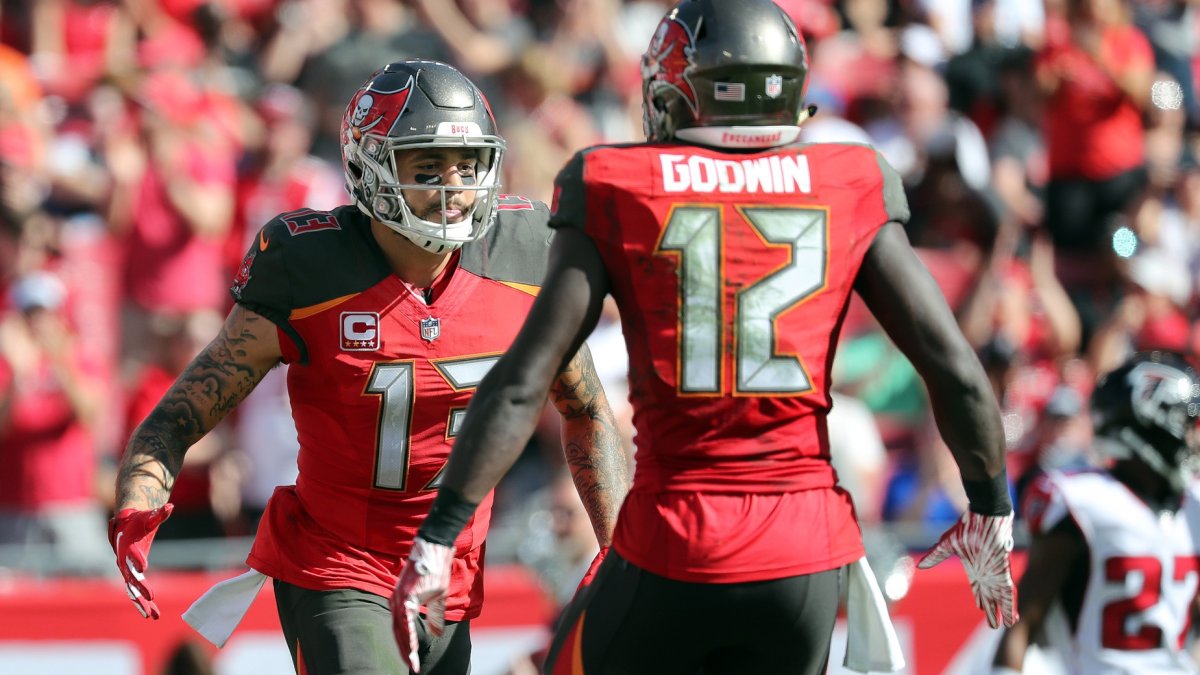In both DFS and season-long fantasy football, week-to-week roster construction at the wide receiver and tight end positions separate the haves from the have-nots.
Choosing between mid-tier options to round out second and third wide receiver and flex spots often feels like a guessing game. As Eric Eager mentioned last week, average depth of target — which is linked closely with air yards — reigns supreme when evaluating wide receivers in fantasy football. Other variables used in decision making often consist of matchup-related stats, shadow-coverage reports and different defensive schemes.
As we continue exploring the fundamentals of fantasy success, we wanted to take a closer look at defensive scheme concepts — specifically coverage schemes — to see how they affect fantasy performance.
[Editor’s note: Subscribe to PFF ELITE today to gain access to PFF’s Premium Stats and new Player Grades experience in addition to the 2020 NFL Draft Guide, 2020 Fantasy Rookie Scouting Report, PFF Greenline, all of PFF’s premium article content and more.]
Coverage Schemes
PFF has tracked the defensive coverage scheme on all passing plays since the 2014 NFL season. Before the snap of the ball, the defense gets labeled with one of the following coverage designations.
| Coverage | Description |
| 2 Man | A two-deep safety concept where a man-coverage principle is applied. The underneath coverage will be inside-leverage man across the board with a two-deep safety shell. |
| Cover 0 | A man-to-man coverage across the board with no deep defenders. This coverage is typically accompanied by a blitz. |
| Cover 1 | When a defense plays any form of man defense across the board with a defensive player as a single-high man. |
| Cover 2 | A two-deep safety concept where any zone principle is applied. This can include Tampa 2, 2 Traps or 2 Combo/Match. |
| Cover 3 | Any three-deep, four-under concept or any three deep with a blitz package concept. This includes straight zone drops as well as coverages that play closer to 3 Match or Fire Zone. |
| Cover 3 Seam | Matchup-zone concept. A three-deep, four-under concept where the curl/flat (buzz) defenders match the No. 2 when they go vertical or outside. |
| Cover 3 Cloud | A three-deep look in the secondary while one of the outside cornerbacks uses Cover 2 technique at the line of scrimmage to jam/reroute a receiver. A safety rotates over the top to the deep outside-third zone. |
| Cover 3 Double Cloud | A three-deep look in the secondary while both outside cornerbacks use Cover 2 technique at the line of scrimmage to jam/reroute the receivers. The safeties rotate over the top to the deep outside-third zones. |
| Quarters | A quarters concept on both halves of the field. In general, it will be a four-deep, three-under concept where the corners are on the No. 1 and the safeties on the No. 2. The backside safety rotation is then dependent on formation. |
| Cover 6 | A quarters concept on one half of the field and a two-deep concept on the other half. |
| Goal Line | Calls where a goal-line defense is used. This does not need to occur in the goal-line area; it may occur in the field on third-and-1, etc. Whenever a team puts their goal-line personnel on the field, this category will be used. |
| Cover 1 Double | Differentiates from Cover 1 in that the defense is specifically assigning two defenders to cover a single receiver. |
| Bracket | A split-field (two high safeties) quarters man-match coverage concept with the safeties keying No. 2 to No. 1 with inside leverage. The cornerbacks play outside leverage to double-cover the receivers. |
| Red Zone | Calls that are typically specific to the red zone and do not occur in the field often. These concepts can include bracket concepts, double lurk concepts and gameplan red-zone concepts. As a general rule, this category is limited to defensive calls within the 12-yard line. To help clarify, Cover 1, Cover 0, and basic/generic Cover 3 can be called as such. All other coverages inside the 12-yard line can be called Red Zone. |
| Prevent | Special end-of-half or end-of-game situations where a prevent defense is utilized. This is more for sorting purposes and is to filter out these situations from other defensive calls and categories. |
| Miscellaneous | Coverage concepts that we feel do not comfortably fit into any of our coverage categories. This may include major gameplan calls or adjustments, situationally dependent schemes not covered in our designations and/or schemes that can’t be quantified in this system. |
We can further classify our coverage variables into five categories: Man, Cover 2, Cover 3, Even (Cover 4 and Cover 6) and Other.
Exclusive content for premium subscribers

WANT TO KEEP READING?
Dominate Fantasy Football & Betting with AI-Powered Data & Tools Trusted By All 32 Teams
Already have a subscription? Log in



 © 2025 PFF - all rights reserved.
© 2025 PFF - all rights reserved.